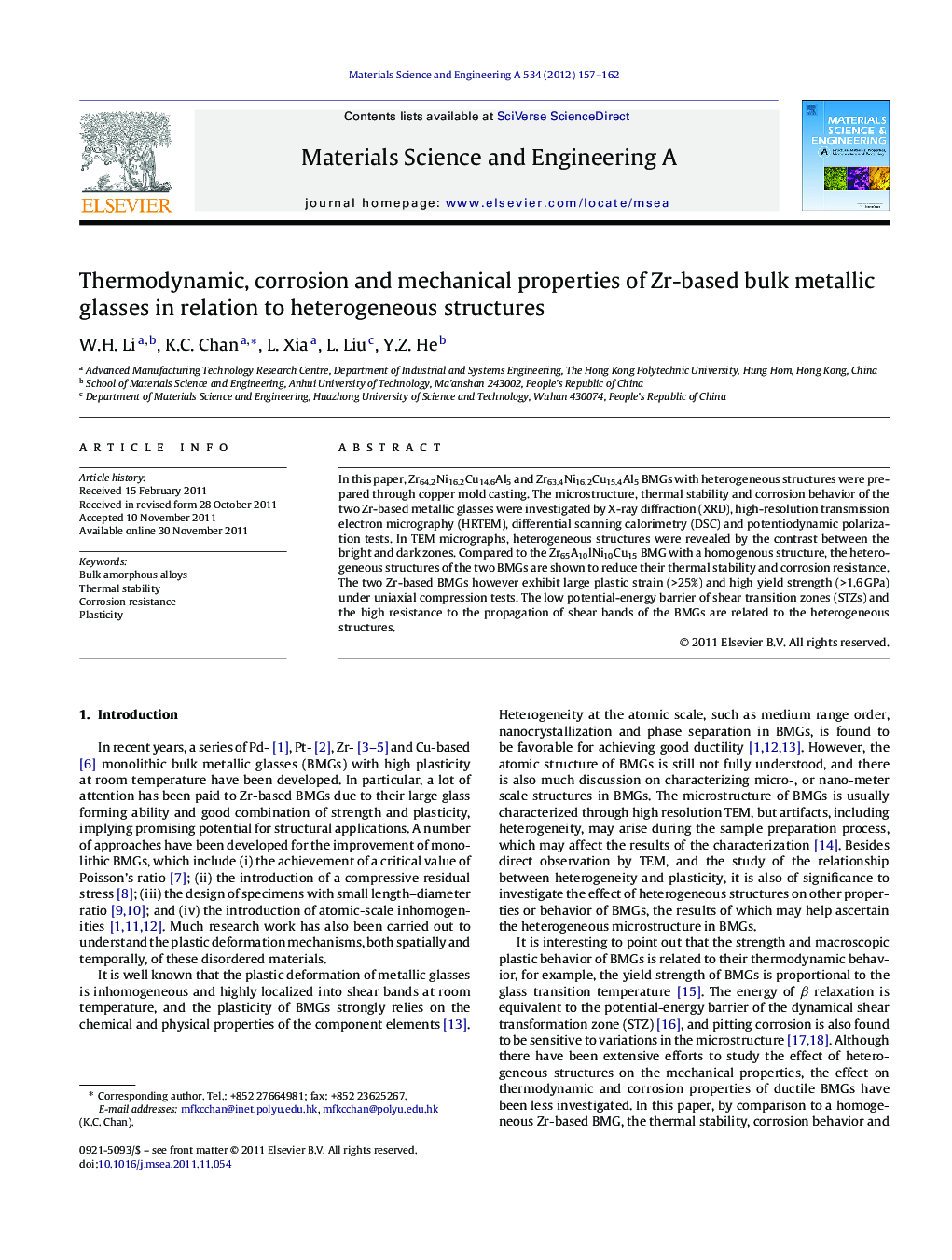| Article ID | Journal | Published Year | Pages | File Type |
|---|---|---|---|---|
| 1577559 | Materials Science and Engineering: A | 2012 | 6 Pages |
In this paper, Zr64.2Ni16.2Cu14.6Al5 and Zr63.4Ni16.2Cu15.4Al5 BMGs with heterogeneous structures were prepared through copper mold casting. The microstructure, thermal stability and corrosion behavior of the two Zr-based metallic glasses were investigated by X-ray diffraction (XRD), high-resolution transmission electron micrography (HRTEM), differential scanning calorimetry (DSC) and potentiodynamic polarization tests. In TEM micrographs, heterogeneous structures were revealed by the contrast between the bright and dark zones. Compared to the Zr65A10lNi10Cu15 BMG with a homogenous structure, the heterogeneous structures of the two BMGs are shown to reduce their thermal stability and corrosion resistance. The two Zr-based BMGs however exhibit large plastic strain (>25%) and high yield strength (>1.6 GPa) under uniaxial compression tests. The low potential-energy barrier of shear transition zones (STZs) and the high resistance to the propagation of shear bands of the BMGs are related to the heterogeneous structures.
► Two Zr-based BMGs with large plasticity were prepared by copper mold casting. ► TEM observations reveal that both BMGs exhibit heterogeneous structures. ► The isothermal annealing studies reveal two independent exothermic peaks. ► The two BMGs exhibit poorer corrosion resistance. ► The properties of the two BMGs are related to their heterogeneous structures.
